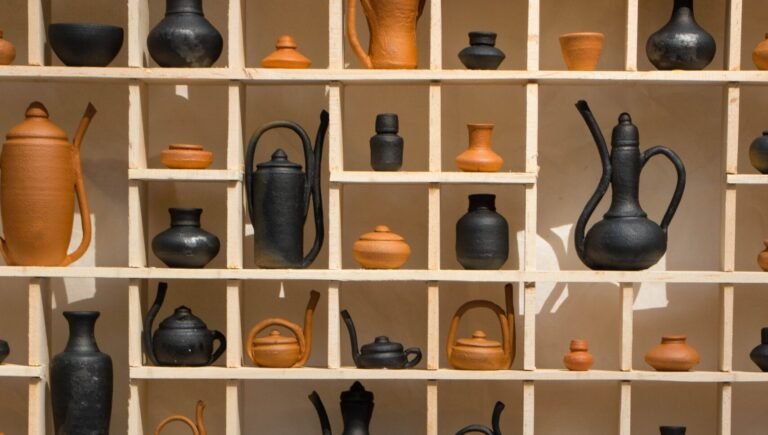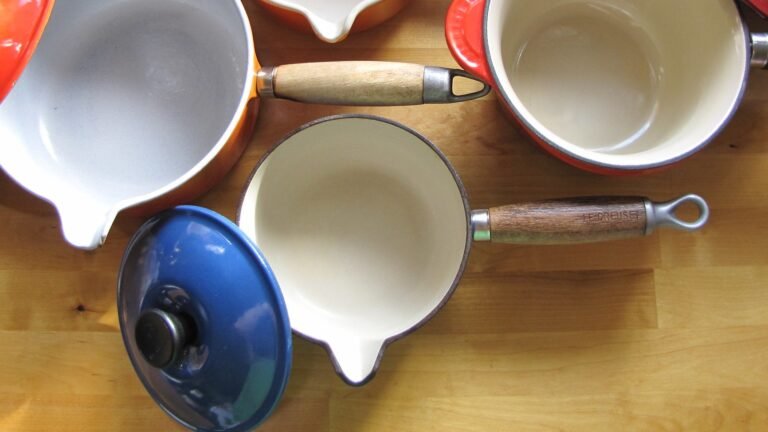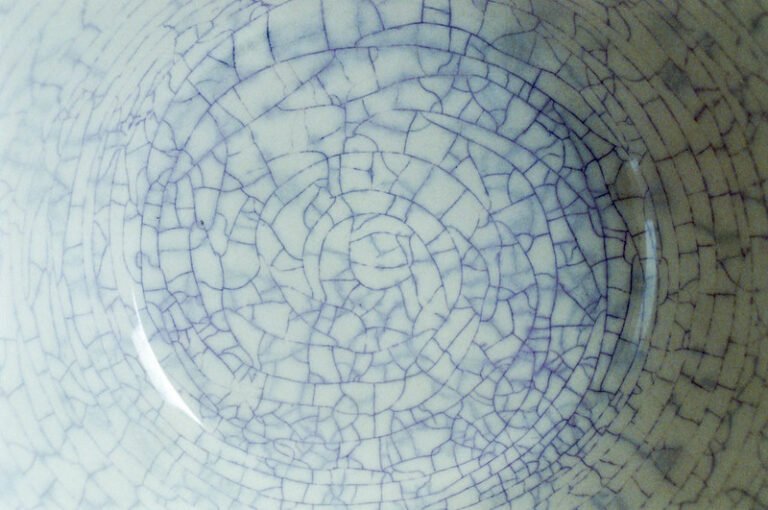Cheesehard
Cheesehard The drying of a piece of pottery while it is still soft is the first stage. Green ware, leather-hard, black Hardin, white-haired, and bisque are other terms for different conditions of clay.
Cheesehard The drying of a piece of pottery while it is still soft is the first stage. Green ware, leather-hard, black Hardin, white-haired, and bisque are other terms for different conditions of clay.
Ceramic change When clay is heated to around 1100 ° F or higher, it transforms. Chemically linked water molecules are removed from clay particles at such temperatures. The clay particles are conjoined together, resulting in a lasting modification in the ceramic piece. When clay items are re-introduced to water before transformation, the clay particles slake…
Blackhard A stage in the drying process when a piece of pottery is no longer pliable but not completely dry. The piece has a dark tone due to the moisture content.
Absorbency Porous materials’ capability to absorb a liquid (water) into their air gaps. It is useful in the making of pottery for applying glaze to bisque clay in preparation for glaze fire. Consumers should be concerned about the absorption rate of final components (after the fire). Pieces with a lower absorption capacity are more likely…

Clay and ceramics are often used to describe different materials for making pottery. Clay is a type of ceramic, but not all ceramics are made of clay. Is there a difference between clay and ceramics? Clay and ceramics are such different things even though they look alike. Clay is a natural material that comes from…

In addition to having non-stick properties, enamel cookware is durable, attractive, and heat-retentive. Ceramic cookware, on the other hand, is non-reactive to acidic foods and promotes healthy cooking. But what is the real difference between these two terms? Ceramic is a dense, brittle, heat- and corrosion-resistant solid made by firing an inorganic, non-metallic material at…

During ancient times our ancestors used earthen pots for cooking. Earthen pots or clay pots are made of clay which is molded by hand and baked. Throughout the years we have shifted into different cookware like steel, aluminum, brass, bronze, and more, but nothing can beat the benefits of using the traditional earthen pots. Now,…

Polymer clay is certainly a useful material in various arts and hobbies such as pottery and sculpting. Working with polymer clay is easy, which is why many opt for this type over natural clay. However, the common question with this type of clay is whether it air dries or does it need to be baked?…

Glazing is a way to coat and add colors to pottery items. A glaze can make the pottery look beautiful in many different ways, such as matte, shiny, vibrant, opaque, smooth, or clear. In practical terms, glazing made pottery waterproof and safe for daily use, especially those related to food, by adding a layer of…

Making ceramic items is a creative and fun job. The problem may be that the clay must be baked to obtain an object that is strong and usable enough. In previous posts on this site, we have already mentioned the process of baking different types of clay, as well as different types of ovens that…